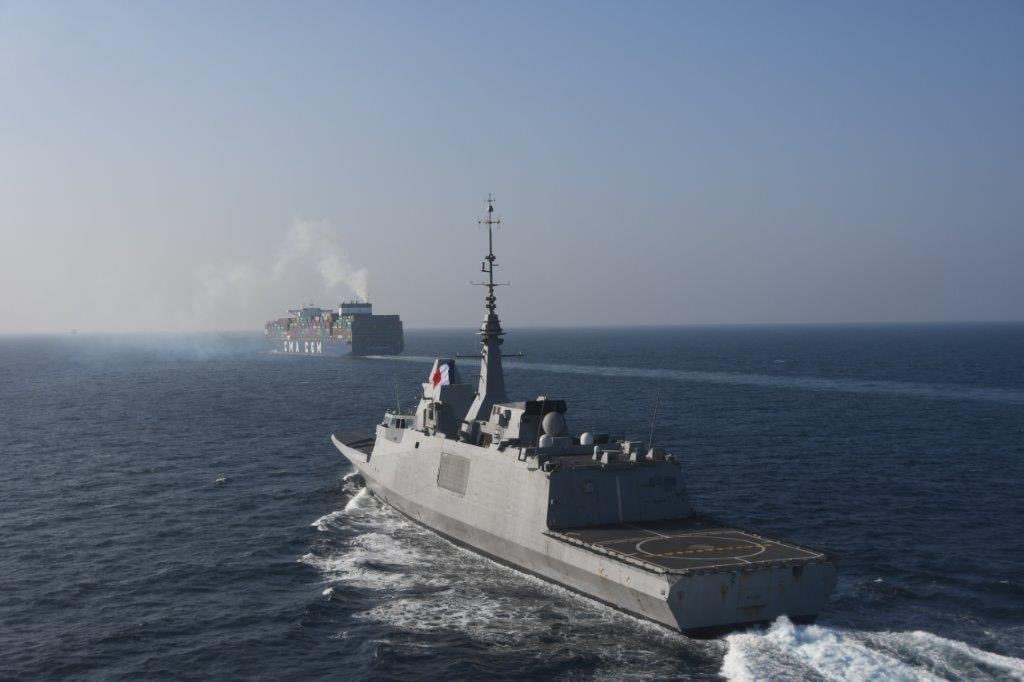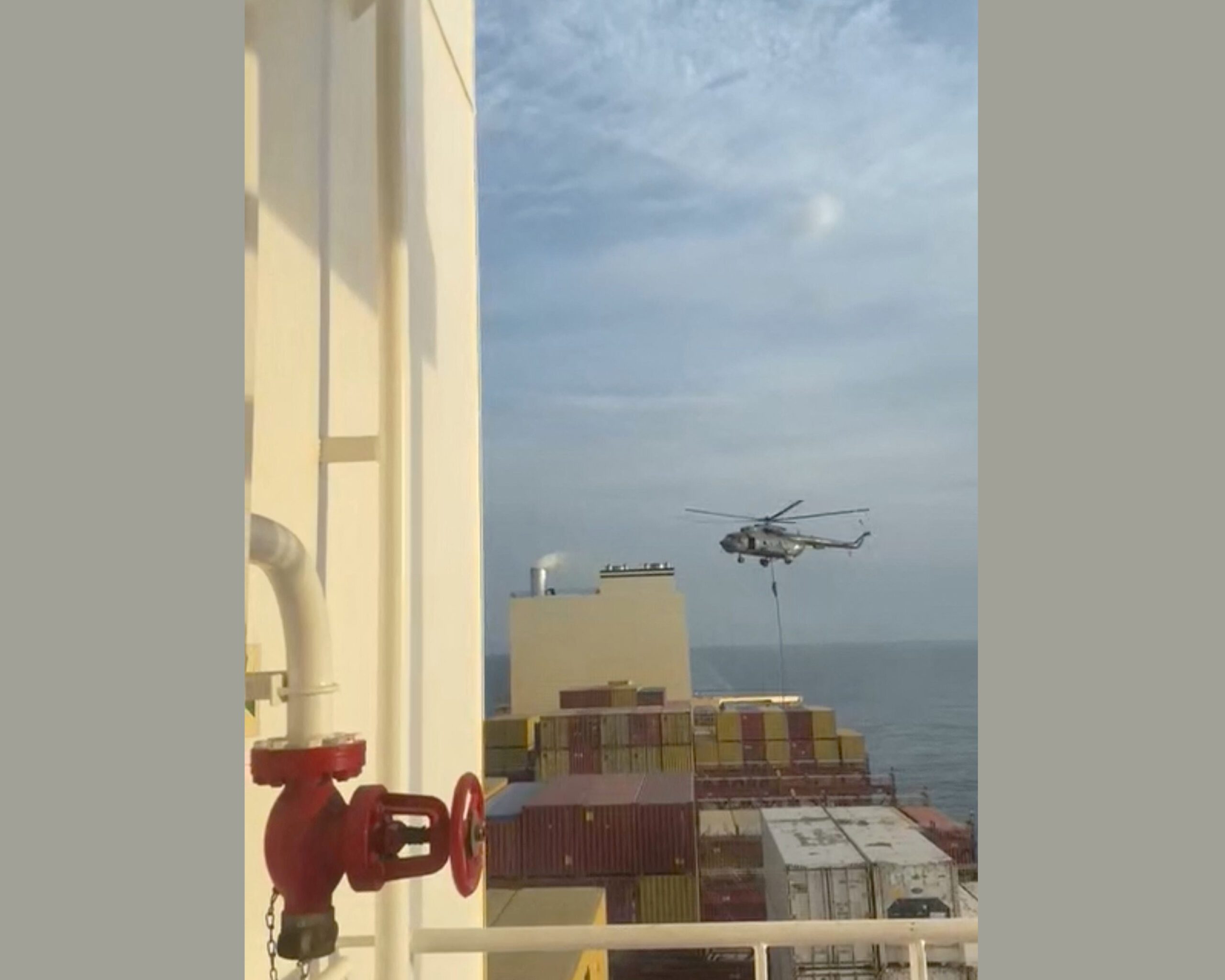Adm. William “Bill” Moran who said that in total close to a dozen sailors aboard the USS Fitzgerald would face administrative punishment. (U.S. Navy photo by Gary Nichols/Released)
“You gotta challenge all assumptions. If you don’t, what is doctrine on day one becomes dogma forever after.” Colonel John Boyd, USAF
By Captain John Konrad (gCaptain) Last week the Secretary of the U.S. Navy released a 41 page inquiry report on the “Deaths of Seven Sailors Aboard The USS Fitzgerald” alongside comments from the Navy leadership which fail to discuss the cause of the tragedy and blames both vessels for exhibiting “poor seamanship” in the moments leading up to the collision. The inquiry continues with damage photos, diagrams, an emotionally heart wrenching narrative and overwhelming praise for the damage control efforts of (mostly) enlisted sailors among her crew.
The question is… why was this document released and to what benefit? The answer is that this document was written and released for one primary purpose: Public Relations.
Decades ago each major media outlet had dock reporters; journalists who wrote exclusively on maritime affairs and had an extensive list of high level maritime contacts as well as a working knowledge of ships. Today I only know of one journalist with this background, Carl Nolte of the San Francisco Chronicle. All the rest are generalists who are too easily confused by complicated facts and too susceptible to emotional triggers. As Ryan Holiday, author of “Trust Me, I’m Lying: Confessions of a Media Manipulator” says in this bestselling book… “today’s most effective public relations firms oversimplify facts and compensate by giving the public what it craves: an emotionally compelling story.”
The US Navy’s “Deaths of Seven Sailors Aboard The USS Fitzgerald” is just that, the vapid telling of a story about a few brave and honorable sailors fighting floods, destruction and death itself with a cursory acknowledgement of fault. It does nothing to prevent future collisions at sea and everything to send the message to the fleet that mistakes will not be tolerated and junior officers will be punished.
As a work of fiction it would be praised for pitting man against machine and for well painted characters – with strong wills and moral courage – placed in extraordinary circumstances to save the lives of shipmates and friends. But this is not a work of fiction or, at least, it is not supposed to be. It is supposed to be a preliminary investigation report filled with hard facts and harder questions that remain unanswered. This report contains very little of either.
I have no doubt that the ad hominem attacks directed at myself and gCaptain from US military personnel will continue. Like the report, they are devoid of meaning and attempt to engage the emotions. I will not apologize. No one should apologize for being right. Also unlikely is that I will ever apologize for saying this: the Navy has blamed the wrong people.
Last week, after releasing the report, Admiral Bill Moran, deputy chief of naval operations, told reporters the ship’s commanding officer, executive officer and master chief petty officer would be removed from the vessel because “we’ve lost trust and confidence in their ability to lead.” Moran said that, in total, close to a dozen sailors would face administrative punishment and left open the possibility for further action. But are the USS Fitzgerald’s officers and even some of the enlisted members at fault for not being able to avoid a relatively slow and highly unmaneuverable unarmed merchant ship? Are they at fault for the deaths of seven sailors? I do not believe they are.
It is maritime tradition which states the Captain is the primary party at fault for all failures aboard ship and for good reason. But maritime tradition does not extend blame down the ranks and not to non-commissioned officers like the USS Fitzgerald’s master chief petty officer who has been removed by Admiral Moran.
Those who are responsible for the events leading up to the collision, not just those involved in the collision, are those who steered the naval fleet towards these errors. The U.S. Navy has experienced four major failures in navigation this year alone. The men who are cumulatively responsible for these incidents are the same men who are responsible for other troublesome oversights, like the widespread and pervading ignorance of US Naval Officers as to how merchant ships operate at sea. These men have not been called to face “administrative punishment”. At the very least they include Adm. John Richardson, Adm. Bill Moran, Admiral Scott Swift and, the author of the Damage Control Inquiry, Rear Adm. Charles Williams.
With four collisions in under ten months, when is the Navy going to “lose confidence” in it’s own ability to decide who should be in command?
Those I interviewed for this article who defend the inquiry point to the fact that this document was not written to find the cause of the collision nor was it written to cast blame. It was written as the result of an investigation to evaluate the crew’s damage control activities.
This is a poor excuse. If this document has nothing to do with the collision itself then why release it alongside statements conceding “poor seamanship” and a loss of faith in leadership ability of the ship’s officers?
If the document is supposed to provide a focused look at “the crew’s damage control activities” then why is it so lacking in information about the challenges and failures the crew experienced after the incident?
Numerous problems of significant scope and size where barely mentioned in the report. Major problems, such as number 16: “The collision resulted in a loss of external communication and a loss of power in the forward portion of the ship”, are not explained at all. The most basic of commercial ships are required to have redundant emergency power systems. How then does half of the complex ship loose power completely? More importantly, why is this not explained? What lessons learned about this power loss could have been transmitted to the USS McCain? And how, in 2017, when any civilian can purchase a handheld Iridium satellite phone for less than the price of the latest iPhone and a portable EPIRB for much less, could the communications system of a US Naval warship be so damaged and the ship’s leadership so shaken, that it takes the ship a full thirty minutes to transmit a Mayday (via Cell Phone no less)?
Another important question that goes unanswered is… did the damage control efforts result in a reduced situational awareness after the collision? If not then why did it take two and a half hours to identify the name of the ship they collided with? What would have happened to damage control efforts if this had been a terrorist attack or enemy combatant?
Those facts are not even the most troubling. Both the civilian and military continue to fail to consider the design and construction of the ship itself. No experts from the vessel’s builder, Bath Iron Works, or the architect or the Admirals in charge of approving the Arleigh Burke-class destroyer design were mentioned. The report completely fails to mention the damage control done aboard the ACX Crystal because that ship suffered relatively minor damage. What design and construction tradeoffs were made that resulted in a the hull of a billion dollar warship having much less intrinsic strength than a Korean built containership that was delivered for a fraction of the cost?
Where is the independent analysis? Were damage control experts from the Japanese Navy consulted? What about the Japanese Coast Guard? Did salvage masters take a look? Where are the stability calculations? Where is the Coast Guard report? Perhaps these will all follow in the full report, but I doubt it. A comparable civilian report would contain testimony from dozens of the top experts in their field and nearly every organization associated with both vessels would be invited to participate. Because, one thing we have learned during the past few centuries is this: no organization can work alone, no ship owner – not Olympic Steamship, not Tote and certainly not the US Navy – can be 100% objective when investigating itself. Any attempt to do so is the result of ignorance or corruption or both.
Will these questions be answered in Admiral Richardson’s upcoming review? The one he has ordered to be conducted on “a very tight timeline” because “We need to get to the bottom of this.” These questions are certainly not on his short list of priorities which include looking at “operational tempo, trends in personnel, material, maintenance and equipment.”
And why has Admiral Richardson said that a comprehensive review would examine the training of U.S. forces deployed to Japan “to make sure we are doing everything we can to make them ready for operations and warfighting“? Are training and systems different for sailors serving in Japan? Has he talked to American merchant mariners assigned around the world who see a global pattern of problems?
Now before my inbox is flooded by another deluge of angry email I do want to say that the contents of the report are important. The damage control team absolutely deserves to be commended for their bravery, exceptional skill and unwavering dedication to their shipmates. Many well deserved medals will likely be given to USS Fitzgerald sailors. And that is exactly where the emotionally heart wrenching contents of this report belongs, inside public letters of commendation given to these sailors, not in an official preliminary incident report.
Official reports need hard information, important data and straight forward acknowledgment of the failures experienced by a heroic crew. This report contains very little… and no lessons learned which could have been of use to the crew of the USS McCain.
This incident, like all maritime incidents before it, was the result of an insidious compilation of events (e.g. AIS systems or steering gear malfunctions) coupled in time with human mistakes and failure. But the mistakes of the junior officers pale in comparison to the mistakes made by senior Naval leadership (e.g. ignoring the concerns of junior officers and American merchant mariners) and, unlike the chain of command above Master, many of those junior officers are young and have time left in their career to learn from those mistakes and share them after being reassigned to another place in the fleet.
That is, if they were given the chance. Given the current leadership’s lack of “confidence in their ability,” that chance appears to be highly unlikely.
Unlock Exclusive Insights Today!
Join the gCaptain Club for curated content, insider opinions, and vibrant community discussions.

 Join The Club
Join The Club













